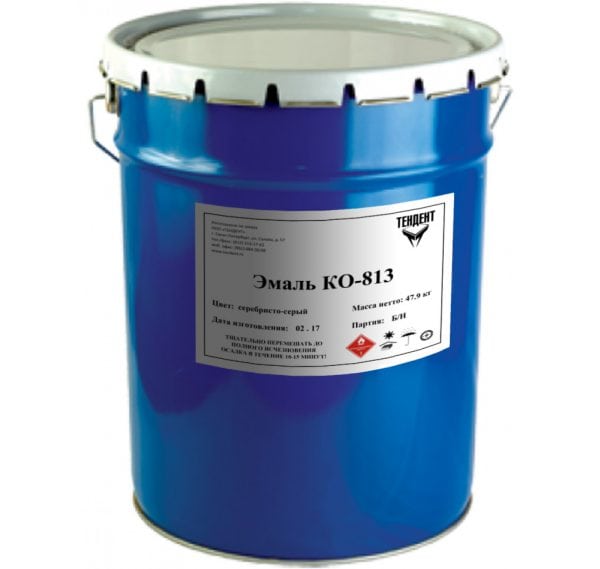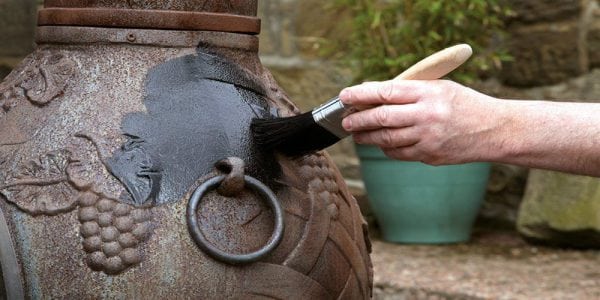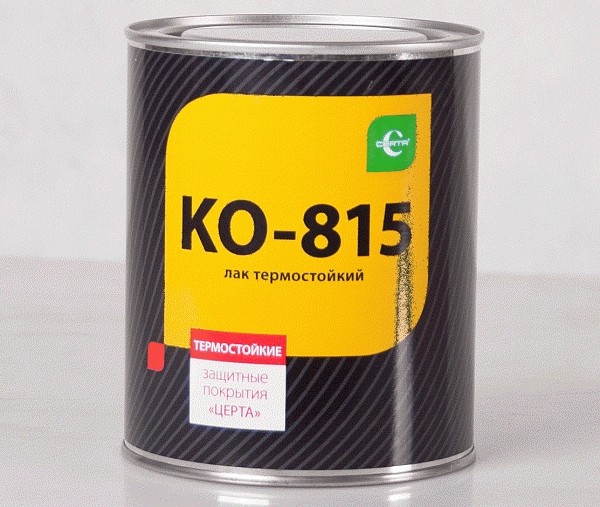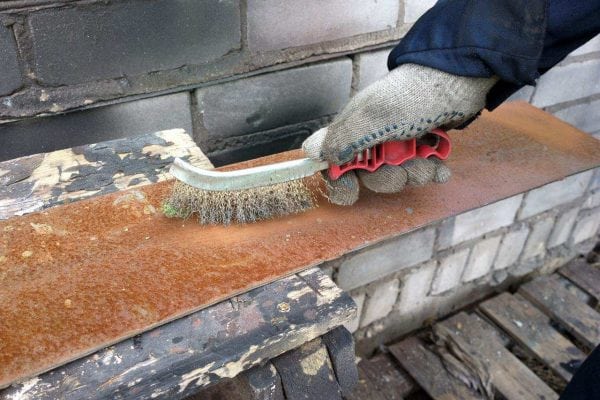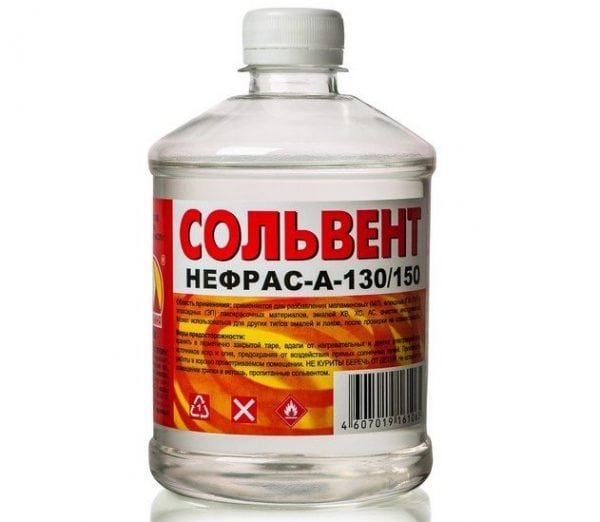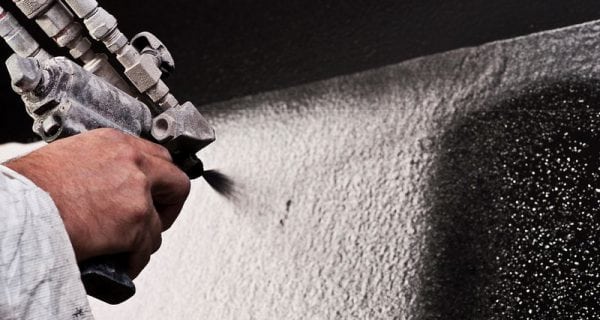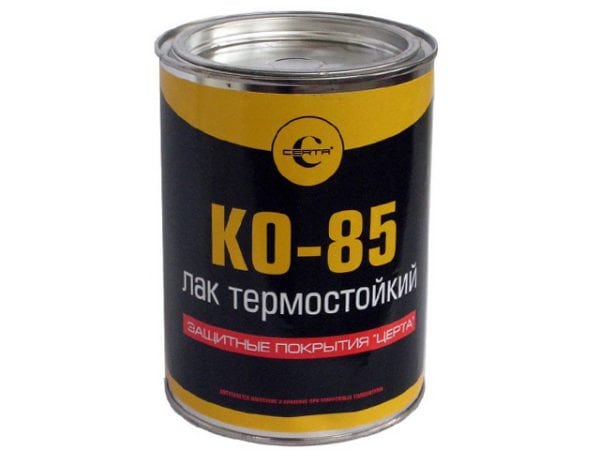Varnishes and enamels - materials necessary in construction. It is with their help that a decorative and protective coating is created, which allows to protect the surface from rust, moisture and other external factors. Varnish KO-85 and its analogues are used in production, where the products operate at high temperatures.
- Purpose and properties of the compounds
- Characteristics of varnishes KO-815 and KO-85
- Characteristics of enamels KO-813, KO-814
- Surface preparation
- Preparatory work with the material
- Application Technique
- Coating Drying
- Safe use of paints and varnishes
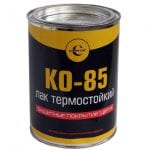
Purpose and properties of the compounds
Heat-resistant varnish KO-815 and varnish with similar properties KO-85 are representatives of the group of paints and varnishes having a complex of modified silicone resins based on organic solvents. Both organosilicon and other material, their purpose is determined by the properties. Both products are used as a component of heat-resistant paints, such as:
- KO-813 enamel (the composition includes KO-815 varnish);
- enamel KO-814 (as a part - varnish KO-85).
These varnishes increase the heat resistance of enamels, improve other technical characteristics. To ensure the necessary qualities, a certain amount of aluminum powder is also introduced into the enamel. Properties and application are indicated by the standard GOST 11066-74.
In addition to the inclusion of paints, varnishes KO-85, KO-815 are used to protect various surfaces from moisture, cold and hot temperatures, rust, atmospheric conditions, gasoline and other fuels and lubricants, and salt. Means have proven themselves best when used on:
- concrete;
- metals;
- glass;
- ceramics.
Enamels KO-813 and 814 are used for painting steel products, cast iron, other metals, which are used in special conditions. Due to the increased heat resistance, materials help protect equipment, parts and any surfaces that are operated at a temperature of + 400 ... + 500 degrees.
It is also permissible to use enamels for painting surfaces that are in the cold (up to –50 degrees). Most often, paint is required for application on:
- Gas pipelines, oil equipment.
- Steam lines.
- Furnaces for production and for waste incineration.
- Car exhaust pipes.
- Separate connections of internal combustion engines.
Characteristics of varnishes KO-815 and KO-85
Varnish KO-815 has a number of characteristics that are established by GOST and are strictly regulated. Here are the main indicators:
- external data of the material - homogeneous structure, color - brown, light yellow;
- the proportion of solids in the composition is 33–37%;
- conditional viscosity according to the device viscometer VZ-246 at a temperature of +20 degrees - 10-13 s;
- the acid number of varnish is up to 10 KOH / g;
- drying period - at a temperature of +150 degrees - 1 hour.
Varnish KO-85 has the following technical parameters:
- external data of the material - homogeneous texture, shade - light brown, light yellow;
- the proportion of solids in the composition is 15-17%;
- conditional viscosity according to the device VZ-246 viscometer at a temperature of +20 degrees - 12-17 s;
- the acid number of varnish is up to 3 KOH / g;
- drying period - at a temperature of +20 degrees - 3 hours.
Characteristics of enamels KO-813, KO-814
The properties of enamels are also regulated by technical documentation. The main ones are given in the table.
| Indicators | KO-813 | KO-814 |
|---|---|---|
| The structure and color of the resulting film | Homogeneous, smooth, silver | Homogeneous, smooth, silver |
| Viscosity according to the device viscometer VZ-246 at a temperature of +20 degrees | 10–13 s | 12-17 s |
| Coating strength according to the U-1 device at a temperature of +20 degrees | 35 cm | – |
| Coating strength after heat treatment for 3 hours at temperatures up to +350 degrees / up to +500 degrees | - / 50 cm | 15 cm / - |
| Duration of drying of a layer of material at a temperature of +20 degrees | – | 2 hours |
| The drying time of the material layer at a temperature of +150 degrees | 2 hours | – |
| Bending elasticity | 3 mm | 3 mm |
| The resistance of the film to water at a temperature of +20 degrees | 24 hours | 24 hours |
| The resistance of the film to oil at a temperature of +20 degrees | 24 hours | 24 hours |
Surface preparation
The surface to be treated should be prepared accordingly. It should be cleaned of:
- spots of fat, technical oils;
- any saline solutions;
- dirt and dust;
- the remains of old paints and varnishes.
Wipe products with rags moistened with solvents, acetone, solvent and similar substances. Next, let the surface dry completely. Using sandpaper or sandblasting, rust must be removed from the surface. The degree of purification must be at least SA2-2.5 according to the international standard.
Previous coatings are completely removed if the degree of their destruction is serious. In the presence of partial chips, when the destruction of the coating is insignificant, only damaged areas can be cleaned.
The areas adjacent to them are also treated in a radius of 10-15 cm. If the coating is destroyed by 20% or more, paint and other materials must be completely removed. Similarly, if the coating thickness is more than 0.5 microns.
to contents ↑If the product operates at elevated temperatures, while it has special requirements for resistance to rust, before varnishing or staining it can be treated with a special tool. This is the primer GF-021, which significantly increases the corrosion protection.
Preparatory work with the material
Before painting, varnishes KO-85 and KO-815 must be thoroughly mixed until gas (air) bubbles no longer appear on the surface. To make KO-813 enamel, 94 parts of KO-815 varnish are added to 6 parts of aluminum powder. To prepare KO-814, 100 parts of KO-85 varnish are introduced into 5 parts of powder. Apply both received paints within the next eight hours.
If the viscosity has exceeded the standard, then dilute the material with solvent, toluene and similar solvents. Kneading is carried out until the mass is completely uniform (at least 10 minutes). Within 24 hours, leave the material warm (+20 degrees).
to contents ↑Application Technique
Ideal conditions for application are a temperature of about +20 degrees, humidity less than 80%, but it is permissible to carry out work at temperatures of –20 ... + 35 degrees. You can apply the tool with a roller, brush, using the technique of pneumatic spraying, airless spraying. The spray nozzle diameter should not exceed 1.8–2.5 mm. Small parts can be dipped.
Features of applying materials in some cases are as follows:
- when painting with a spray between him and the surface should remain 20-30 cm;
- metal products are painted 2-3 times, from concrete, asbestos, cement, surfaces with plaster - 3 times;
- expenditure of funds - 110-180 g / sq. m
Coating Drying
Each layer should dry for 2 hours for KO-813 at a temperature of +150 degrees, and for KO-814 - the same time, but at +20 degrees. The drying quality of each layer is checked "for sticking." Varnish KO-85 is dried for 3 hours at a temperature of 20 degrees, varnish KO-815 - 1 hour at +150 degrees.
The final hardening of surfaces occurs during the operation of painted products, which are used at high temperatures. If you intend to use parts and equipment in an aggressive environment under the influence of chemical agents, they should be tempered before work at a temperature of + 250 ... + 400 degrees 20 minutes.
to contents ↑Safe use of paints and varnishes
When working with materials, it is imperative to comply with safety requirements.Since the described agents are toxic due to diluents in the composition, they cause intoxication and drug intoxication when ingested. The skin and mucous membranes of these funds irritate with direct contact. During operation, apply:
- protective glasses;
- respirator;
- gloves
- thick clothes with long sleeves.
It is strictly forbidden to allow the presence of fire in the room, do not smoke, turn on the power tool, which can begin to spark. Good ventilation is mandatory, or work is carried out outdoors.
The rest of the varnishes and enamels are poured into a strong container, close it. It is disposed of in special landfills along with rags, containers. This will help to avoid unpleasant consequences in the form of chronic poisoning of people in workshops and other rooms.

